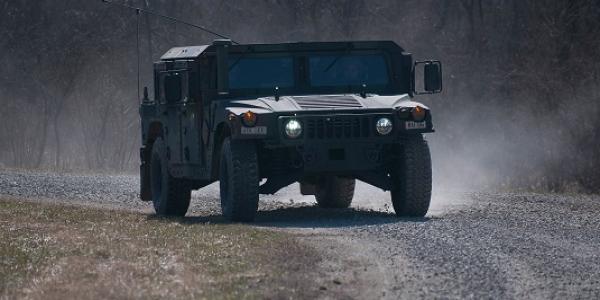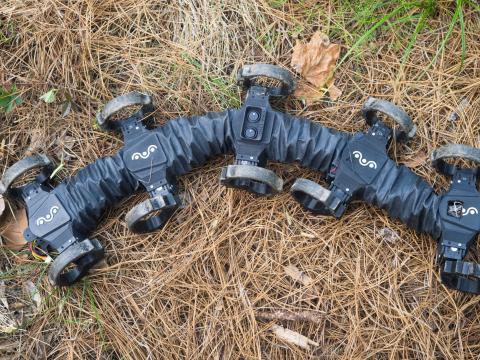Army Scientists Tap Partners for Next Stage of Robotics Technologies
The Army Research Laboratory (ARL) is handing its robotics research in adaptive autonomy to eight partners in academia and industry in what laboratory officials describe as a sprint to develop new capabilities. The Army has awarded $2.9 million in first-year funding as part of its Scalable, Adaptive and Resilient Autonomy (SARA) program to develop methods by which future Army robots can autonomously navigate rough terrain and avoid being blocked or upended by obstacles.
The program is focusing on technologies that advance vehicle autonomy off the road and into the wild. This includes hardware, such as sensors, as well as algorithms for those sensors and for vehicle control systems. Existing ARL robotics advances have proved many autonomous concepts and capabilities, and SARA is aligned with the goals of the ARL’s Artificial Intelligence for Maneuver and Mobility Essential Research Program.
“This work is to augment [previous work] so that the autonomy can work in off-road unstructured environments,” says Brett Piekarski, chief scientist of the ARL’s Vehicle Technology Directorate. “It would work in areas where platforms have to deal with a lot more uncertainty—there is less information about the surfaces they are going on, there could be slippage in the platforms, there could be damage to sensors—so the platforms need to be self-aware, they need to be able to understand their state on varying surfaces, whether they’re slipping or sliding, and adapt their navigation and their estimate of location.
“They need to have sensors that can self-calibrate on the move to be able to better understand where they are, their states, their environment so they can navigate through that,” he continues. “And, they need to do things much faster so they can do this in real time.”
These issues apply to both ground and air vehicles, Piekarski says. Autonomous unmanned aerial vehicles (UAVs) must be able to detect and avoid wires or tree branches, for example. Both types of vehicles must avoid tall wire fences.
SARA research aims to improve or introduce several different types of capabilities. Scientists want to install multiple layers of traversability maps that can accommodate user input, for example. Extending existing capabilities over longer ranges is another goal.
SARA differs from earlier programs, which took a consortium approach, in that it is structured for collaboration amidst independent activities, allows Eric Spero, SARA program manager. “We’re running SARA in a series of sprints, so we are expecting outcomes and improvements over a baseline capability within nine months,” he states.
“We’re looking at the performers and collaborators in SARA generating tangible products in the form of software,” Spero adds. This software capability will be integrated onto ARL testbed platforms, after which the ARL and the collaborators will demonstrate the new capabilities in an experimental environment. The outcomes that emerge from that testing, which probably will take place around the end of 2020, will serve as the new baseline for the next technology sprint, he notes. Future sprints will focus on scalable heterogeneous and collaborative behaviors and human-agent teaming, ARL officials say.
“The whole idea here is that we can accelerate research out of best-of-breed performers,” Piekarski states.
He continues that this effort goes beyond what industry is working on right now. SARA is designed to solve problems that industry is not necessarily going to solve. “We should leverage what commercial industry is doing as much as possible, and we plan to do that,” he says. “But a lot of the Army use cases, the environments that we go into and the fact that we have potential adversarial behaviors happening at the same time to our platforms and to the environment, we need capabilities that go beyond what the commercial sector is solving at the moment.”
The eight organizations awarded contracts for this iteration of SARA are the Colorado School of Mines, the Florida Institute for Human and Machine Cognition, GE Research, Indiana University, the University of California Berkeley, the University of Delaware, the University of Rochester and the University of Washington.





Comments